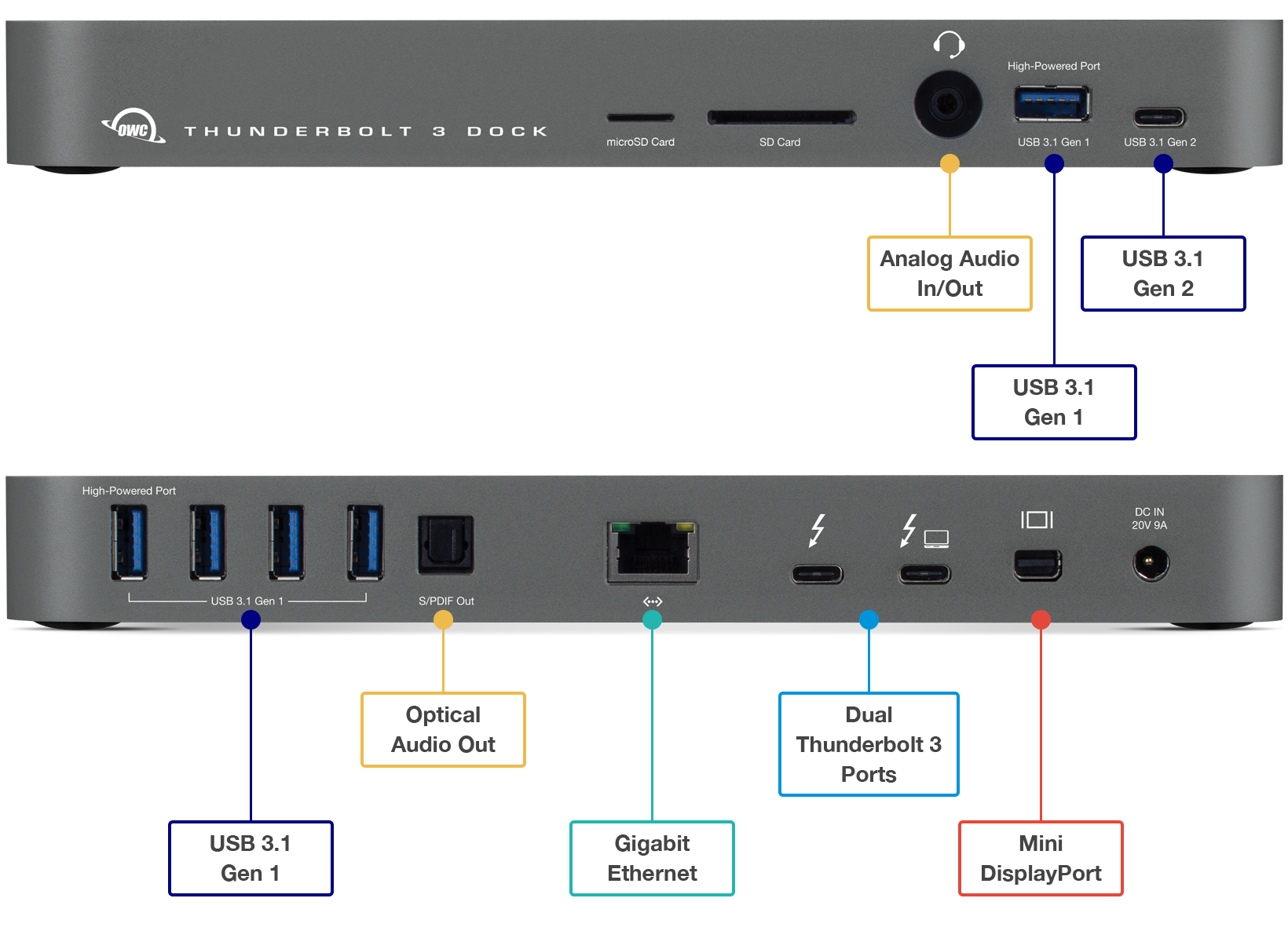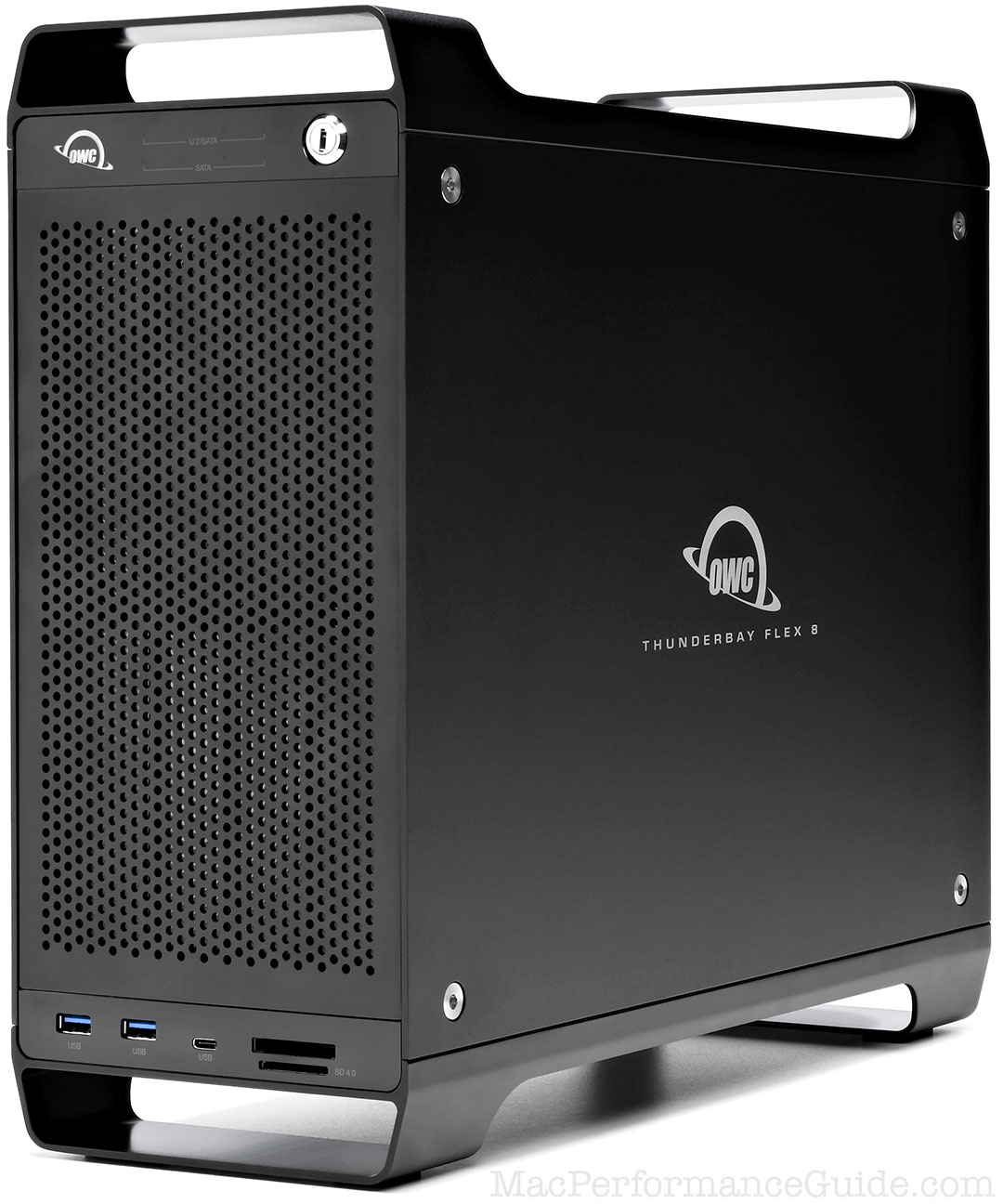Concussion: Post-Crash Recovery Phase 6, Indeterminate Recovery
Related: concussion, double century, Eastern Sierra, exercise, hard core, health, How-To, noise, Other World Computing, peak bagging, ultra endurance exercise
Legal disclaimer: Since we are not doctors, never follow anything based on health-related topics on this or related sites without first consulting with your doctor or other trusted health professional. OTOH, the study of brain injuries is at best in its infancy, like studying outer space with primitive telescopes.
Lloyd’s view from the personal experience of having healed himself is that possibly excepting a few groundbreaking clinics, sadly most doctors (including neurologists) have little insight into the best way to recover from a mild traumatic brain injury. Not only that, there is a large professional reservoir of false cognitive commitments about brain function, the best example being the recently proven fact that neuroplasticity does not cease after childhood, and indeed endures into old age. Search the web—the medical literature is a vast uncharted desert as of 2018, even for the acute phase. The field is only now getting the attention it deserves. See two recommended books which have solid suggestions.
Every concussion is *personal* and there is no timeline or one-size-fits-all approach. There is/was no expert concussion specialist in his densely populated urban area that Lloyd could turn to—none. Indeed the ER physicians were totally clueless about what to do after leaving the ER giving not just bad, but extremely risky advice (“OK to do go back to work, to ride a bike right away”)—worse than anything else they could have said. Just stating “we are totally ignorant about how to recover” would have been much better, and at least honest. I am adamant on this point, based on my own recovery trajectory.
About this page
This page begins with the first day on which full normalcy was perceived, including mental and physical alertness all day without a need for a nap or early bedtime. That perception was found to be false both physically and emotionally, but most of the time things seem back to normal.
Thank you to supportive readers, and especially my loyal subscribers. The latter are critically important to me as I recover, and I am grateful to them. I also want to thank OWC / MacSales.com and B&H Photo for their ongoing support as I work through this.
Continued from Concussion Recovery Phase 5.
November 7: back to normal, and not
It now seems clear that I’m going to experience periods of high functionality coupled with regular apparently arbitrary surprises. I have the sense that the healing, if it be progressing at all, will take another year.
For example, staying up with full mental attention til 05:30 AM, having read without stop for 8 hours. And repeating that pattern until 3:30 AM the next day and 1:30 AM the following and 11:30 PM after that. And then sleeping a normal 6 to 8 hours. Something I could have handled pre-concussion, so I took it as a very positive sign, and still do. Then (apparently not related a week later), unexpectedly needing sleep overwhelmingly at 20:30 and sleeping until 10:30 AM (14 hours). Sleep requirements remain high, at 10-12 hours but at least if I allow that (never at home, not possible), I don’t get thos sleep afternoons. Maybe the high sleep requirements are a sign that my brain needs it and is still recovering. I hate sleeping my life away though, and it only adds to the pressure of the remaining hours.
Noise is still a problem. Returning home after a month of peace and quiet photographing (well mostly spent in my van processing the photographs), I can hardly stand being at home. My neighborhood is relatively rural, but shredders, leaf blowers, lawn mowers, cars and truck, the frequent overhead rumble and drone of airplanes—this level of noise steadily beats me down until it passes a point where it’s hard to handle. Ear plugs get irritating after an hour, and noise canceling headphones have an annoying faint hiss of their own. I can’t live in peace in my own damn home any more.
I find that noise intrudes to a point where I become distracted enought to be clumsy—I just flayed open my finger with a very sharp knife opening a box this evening. Stupid mistake, but the noise had gotten to me and I wasn’t paying attention.
Emotional breakdowns have not happened for months now, but I have teetered on the edge enough to see that that circuitry is flimsy at best.
July 25, a week of getting by and wondering how to survive financially
I’ve been suffering for an entire week now, operating at 1/10 to 1/3 of my ability. One day it took an effort of will just to box up a few things for shipping. Sleepiness, poor physical performance (so much for training for my final double century), all rolled together with the stress of making too little money and having meager reserves.
Maybe it’s only a disrupted sleep cycle and will pass. That’s my focus for now, but it’s hard to sleep well at home. For starters, at midnight and at 5 AM I can hear the freeway traffic miles away and I cannot seem to tune out that noise (earplugs irritate my ears after a few hours). I might for example feel excruciatingly tired at 15:30, lie down for a nap, and wake up drowsy 3 hours later. On the bike, I have to drag my sorry ass home some days on just a baseline ride at low pace. Stuff like that.
Ideas on concussions
This video on YouTube by Dr. Brandon Brock goes into some of the damage and effects and treatment of a concussion. I wonder if my own immune system is re-damaging my brain, triggered by something like diet or even air pollution (smoke).
Most of these notes refer to the acute phase (typically up to 10 days, could be longer). I think I had some resistance because of my exceptional athletic fitness, but it’s very clear 4 months later that it was a mitigation and not a solution.
“The average pediatrician doesn’t know any of this”. Ditto for doctors, from personal experience.
Notes, and I might have some of these not quite right—watch the video.
- Emegency rooms basically shove you out the door unless you have a brain bleed or cracked skull or similar.
- Blood/brain barrier opens.
- Use vasodilators and anti-oxidants immediately after a concussion to help blood flow to brain and to keep cells alive: intracranial blood drops 30% which helps kill neurons and blood sugar variations which help kill neurons, massive oxidative stress. After a few days (7-14 days in) anti-inflammatories. Process down to every 7 hours after concussion.
- No carbohydrates for up to a week after a concussion. Reduce caloric intake, helps keep inflammation and free radical damage down.
- Control electrolytes so damaged cells don't blow up (excess sodium, calcium, etc).
- Don’t eat excitotoxin like MSG, artificial sweeteners (aspartate, etc)—these kill brain cells in part by allowing more calcium in. No canned food, no MSG, no artificial sweeteners (“tremendous difference in outcome”).
- Cortisol levels rise with a concussion and damages the brain.
- Initially, nitric oxide may be good for increasing blood flow; opiod response is an indicator.
- Essentially fatty acids (a lot) may increase neurotropic factors for brain growth.
- Reaction to electromagnetic fields changing. Brain can’t handle electromagnetic fields: “put your damn cell phone down”.
- Reaction to smells: stay away from perfumes and other strong smells. The liver cannot process the toxins in some strong cells, perpetuates micro gial cells.
- Reaction to light and noise (precisely the issues I had): sensory deprivation is a good practice.
- Brain-derived neurotropic factor and growth hormone and testosterone desirable to go up because already low and a concussion can worsen.
- Any use of vestibular system increases odds of lingering problems (Stanford ER thought this was just peach-fine OK!). Examples: sports, airplane rides, balance of any kind. High altitude and/or airplane can re-concuss (I avoided high altitude for first 2 weeks, seemed OK after that).
- Immune system triggered to start killing off damaged cells, but this can go awry and persist if any new trauma, even mild.
It seems that the emergency room at Solvang and again at Stanford were incompetent to treat a concussion.—no action whatsoever taken post-concussion (“ok to return to work in 3 days”, thank you Stanford ER).
Ideal for any Mac with Thunderbolt 3
Dual Thunderbolt 3 ports
USB 3 • USB-C
Gigabit Ethernet
5K and 4K display support plus Mini Display Port
Analog sound in/out and Optical sound out
Works on any Mac with Thunderbolt 3
July 7, 15+ weeks after crash
It’s clear now that I have PCS (post concussion syndrome), as there are some malingering effects that are hanging on. Several things are problematic:
- Working intensively (computer work) for more than 4 hours can trigger fatigue. For a guy who used to work 80 to 90 hours a week in 2012 and still 50 to 60 hours a week in 2017, that’s both frustrating, and financially a disaster (self employed) which piles stress on top of everything else—a bad combination.
- Working intensively for 8 hours a day for 4 days in late June seems to have triggered a 2 day emotional breakdown, similar but much less intense than the one mentioned in the June 12 entry.
- Fatigue that clearly stems from the brain, since the muscles are recovered. It’s a sag in energy of any kind.
- Unpredictable energy levels, such as a very hard ride after the country’s hardest double century. It’s very hard to gauge what is too much when muscles are fine, but the brain doesn’t give any obvious signals.
All in all, it seems like there is some “bank account” of mental reserves that I can draw upon, but once overdrafted the checks bounce and things break down. I am going to have to be much more disciplined about the duration and frequency of computer work, and to calibrate myself accordingly, hoping for improvement over time.
In my case it is especially discouraging because the implications of not working enough equates to not enough money. And because I don’t have two years or even one to dig myself out of the hole. Counseling patience sounds good, but clashes with hard reality. Combined with meager savings, the implications are not enjoyable to contemplate, and involve my kids in college also. I don’t mind so much suffering a major setback on my own, but it grates that my kids should be hurt by it also. So some days, the light at the end of the tunnel seems to be a train, and I have trouble coping with that stress. And the concussion has made it much harder to cope (damage to emotional processing), so it’s a double whammy. I suppose that most people work for corporations and since the salary remains, that stress is less pressing.
Some good news is that aside from the brain fatigue in The Terrible Two (extremely demanding visually), I can do double centuries without an issue. Something about physical activity seems helpful (always), a theory I posited from the start, and something also now being studied for PCS. The only wrinkle is that the activity must not involve demanding cognitive effort, such as parsing light and shadow for many miles on horrible pavement, such as in The Terrible Two.
June 12, 12 weeks after crash
Sleep: 58°F @ 6060'. Too little sleep past several nights. MRHR=42-44 steady.
About 5 days ago, I had what I’ll just call an “emotional event” that lasted all day even while I retained the ability to do other things. The event was provoked by a powerful negative stimulus I won’t go into here. Clearly the brain has varying degrees of recovery in different areas of the brain. It leaves me wondering whether some areas don’t fully recover—seems likely.
June 11, 83 days after crash: fixing the physical damage from the cash
Sleep: 48°F @ 6950'. MRHR=NA. To bed at 02:30, woke at 7:30, so sleep deprived... then drove 10 hours an 500 miles.
Yesterday I finished up 4 days of intensive medical massage (16 hours over 4 days) with Dee Sickles MMT, LMT in Flagstaff, AZ*. I drove all the way there because of her exceptional skill, which likely has few peers.
Two issues had been lingering from the crash, leaving my back and rib cage squashed on the right side, resulting in a twist that a picture shows clearly with the following issues:
- Lower left back pain from a weakened muscle complex (quadri-something juncture). This caused me 100 miles of pain and loss of power for the 2018 Eastern Sierra Double.
- A “squashed” right rib cage (the crash put most of the impact energy into my right shoulder and rib cage), leaving that side of the rib cage unable to expand normally while breathing in, an asymmetric difference obvious in pictures: rounded-out with a deep breath on the left side (non crash side) and no rounding (flat-looking) and little expansion on the right side (crash side).
- Overall, my torso was still twisted and “locked down” in areas, with lingering muscle trauma from the impact.
With Dee’s deft hands, the twist in my back was removed and my right chest is now expanding (mostly) normally again. The only “problem” is that with the twist gone, I am now sitting symmetrically on my bike saddle, which changes the fit requirements slightly—I’ll have to revisit that with Kevin at 3DBikeFit.com.Also, there almost certainly will be some muscle memory of the trauma that will linger and be provoked over the course of the upcoming Terrible Two Double Century.
She also freed-up my forearms and hands, plus quadriceps and related tendons, neck, feet/ankles, too.
If you have a seemingly intractable physical issue, I highly recommend Dee Sickles. She can fix things that many doctors will call 'impossible', themselves having no real idea how to fix anything (see my notes at the top of this page, I speak from numerous experiences over the years). Visit Dee and see for yourself.
* That many hours that intensively not recommended for most people; Dee states that few people can handle more than 1.5 hours in a single day, let alone as much as 6 hours in a day (2 X 3 hours), as with me. I’m told I’m as unusual as they come for about 12 hours in her experience. Maybe because I’m a double cnetury rider—dunno.
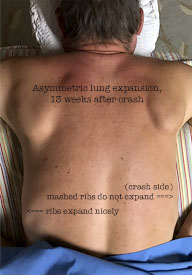
June 5, 77 days after crash
Sleep: 61°F @ 6000'. Good sleep past several nights. MRHR=55 after June 2 Eastern Sierra double century (good), lower today but did not measure.
Hooray! Energy and strength are back starting on June 1 in spite of intensive demands. 24 hours after winning the double, only slight muscle soreness and I felt great all day the next day and the next and today.
Remarkable and unprecedented: near complete recovery in 48 hours (after a very hard double), complete recovery in 72 hours with a hard ride today proving that—this fast a recovery is unprecedented in 7 years of doing doubles. One reason I think is the PEMF vascular therapy and the other reason the protein source I am now using for recovery: Primal Feast hydrolized beef protein powder.
Below, from today’s ride, my Team OWC (MacSales.com) sponsorship bike and wheels, which still needs OWC decals.
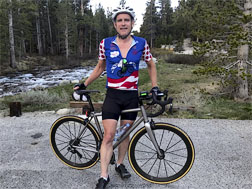
iPhone 7 Plus + iPhone 7 Plus 4.0 mm f/1.8 @ 4mm
[low-res image for bot]
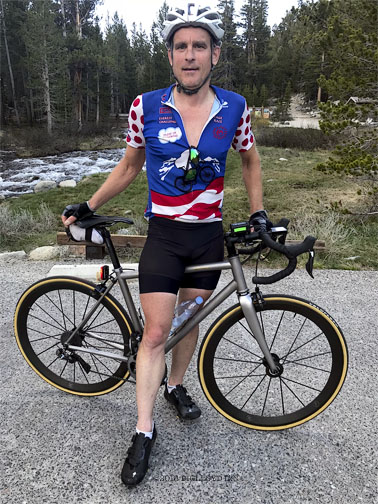
iPhone 7 Plus + iPhone 7 Plus 4.0 mm f/1.8 @ 4mm selfie
[low-res image for bot]
May 26, 67 days after crash
Sleep: 56°F @ 500'. Better sleep than past week or so. MRHR=NA.
After 10 days of not feeling right, I finally had a strong ride yesterday evening, riding at high power levels with no brain fade. My legs had nearly recovered from Davis Double in only 44 hours (unprecedented in 36 double centuries!), but in retrospect it is now clear that post-concussion my brain requires at least a week to recover. Hence Davis Double only one week after Central Coast Double never allowed for brain recovery. Or at least that is now my working theory. Yesterday’s ride was only about 85 minutes. Perhaps if I had tried 3 hours I would have encountered brain fade and maybe more than a week is required.
I don’t yet have the answer, but I have the Eastern Sierra Double coming up on June 2. Unfortunately, several factors predispose me to a poor performance: attend a graduation June 1, then drive 7+ hours, sleep at best 5 hours, wake at 4:30 AM, and with no time to acclimate yet with climbing to 8000 feet elevation. And still—stuff happens—I could have a bang-out day. Should be interesting, or a sufferfest!
8-bay Thunderbolt 3
2.5 or 3.5 inch hard drives, NVMe SSD, USB-C, USB-A, DisplayPort 1.4, SD slot, PCIe slot, 500W power supply.
Non-RAID or RAID-0/1/4/5/10.
Capacities up to 128 Terabytes!
May 23, 67 days after crash
Sleep: 57°F @ 500'. have not ridden for two days. Restless sleep for a week now. MRHR=NA.
Today I rode my standard 90 minute ride, after not riding for 2 days (highly unusual). My legs were rested and could put out power easily enough, but after an hour I felt like I had 2-3 weeks ago: legs feeling fine, but mental focus gone and in general a system feeling of wanting to close my eyes and sleep. Sure feels like a regression, now about 10 days going. Oh well, maybe this will takes months or a year, and maybe not—who knows. I would like to just go travel for 2 weeks and recover and rest, but the ice is now very thin financially, so there is just no choice but to plod along and hope for better days.
May 22, 66 days after crash
Sleep: 57°F @ 500'. 2 hour nap in evening after ride, then 23:30 to 6:30. MRHR=46.
Morning resting heart rate (MRHR) at 46 suggests full recovery from the May 19 Davis Double, 3 days ago, which is remarkable; see my speculation in that blog post. A short ride yesterday and legs had zero soreness and felt nearly recover—44 hours after finishing. And yet, today was a very poor day: I had an unexplained headache all morning and felt light-headed all day, getting little work done, though ultimately forcing myself to one ~2 hour task.
How does one discern whether recovery is complete and it’s just a crummy day for no apparent reason, or whether it is a symptom/regression from a concussion? That’s a question I have no good answer to. It feels like a little bit of both, but I don’t know.
In a few days I will have some fast-grown lumps scanned by ultrasound (8mm sphere in groin morphing into an odd-shaped 40mm X 10mm X 5mm thick mass, plus 3 lumps in my neck, plus another spherical lump appearing yesterday in my groin) . They are surely lymphatic, being in key areas of the lymphatic system, and are not showing any sign of fading. Probably just a side effect of double century riding, though I’ve never had that before. The local in-network facility doesn’t respond to it as anything important, telling me to come in 3 weeks for their earliest appointment— if benign no big deal, but if not it’s a bad plan—not that I really think it’s cancer; it’s almost certainly some lymphatic system blockage. Maybe that’s why I feel crappy. Anyway, the 3-week thing is what my unsubsidized $34K/year ($44K last year but I had to downgrade) premiums for family of five pays for. Fortunately I found another place also in network that can see me two days from now on May 24. I am hoping they don’t want to surgically remove the thing in the groin since it would mean the end of the cycling season (can’t ride 200 miles on a suture), but I am also hoping it goes away.
ANYWAY, regular issues morph into that “is it the concussion thing” and become hard to distinguish.
May 18, 60 days after crash
Sleep: 46°F @ 500'. 2 hour nap in evening after ride, then 21:30 to 8:30, solid sleep. MRHR=na. This has been a two day regression with no apparent cause.
Davis Double tomorrow (I hope I can handle it, I will rest most of today), along with a win at Central Coast Double last Saturday.
I have generally felt good but one deficit that remains is focus and drive as to work—it takes effort. I think these are subtle lingering effects that will resolve, and summer is coming which I also think will help. Another lingering effect is the feeling of being emotionally more fragile, a symptom I’ve read can happen to some. I will overcome that I am certain but maybe it will take longer.



